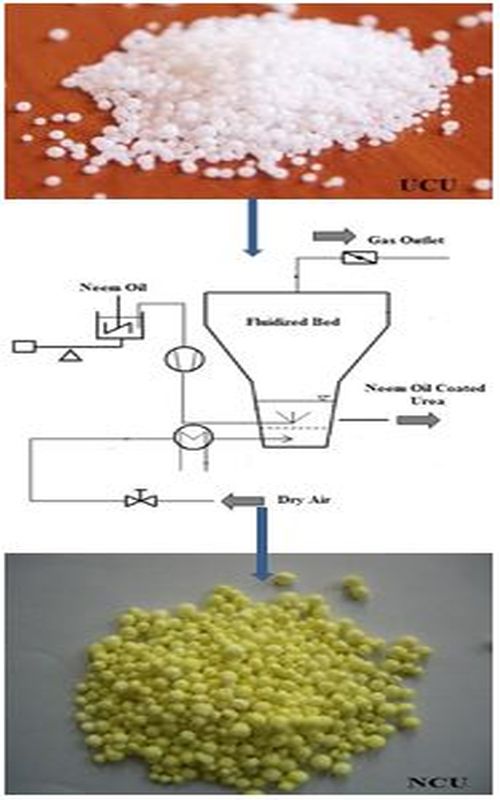Neem (Azadirachtaindica) oil coated urea as a novel controlled release fertilizer: Physical and chemical analysis of structure and its nutrient release behaviour Scientific paper
Main Article Content
Abstract
The development of controlled release fertilizers (CRF) is a green tech-nology that not only reduces nitrogen loss, caused by volatilization and leaching, but also alters the kinetics of nitrogen release, which, in turn, provides nutrients to plants at a pace that is more compatible with their metabolic needs. With an increasing awareness towards human health and environmental protection, there is a rapid shift towards the development of eco-friendly fertilizers based on natural resources. Majority of the literature on CRF pertains to organic and inorganic material based coatings on fertilizers and among them in the case of neem oil coated urea (NCU) most of the literature is confined to the elucidation of coating effect on increasing the crop yield and plant growth. However, literature lacks any comprehensive study on NCU as a CRF, covering major aspects such as its characterization, determination of nutrient release rate, and comparison with other CRF. The present work is an attempt to fill this gap in scientific knowledge about NCU. In the present study, neem oil coated urea (NCU) was prepared to achieve the controlled release mechanism necessary to meet crop requirements. The characterizations of the uncoated urea (UCU) and NCU were done using scanning electron microscopy (SEM) with energy dispersive X-ray analysis (EDX), Fourier transform infra-red (FTIR), refractive index (RI) and crushing strength test. To establish the superior behaviour of NCU as a CRF, the results were also compared to the literature data of other CRF, namely phosphate slimes (PCU) and bentonite coated (BCU) with chitosan as a binder. The nutrient release experiments showed that NCU gave a release of 1.03 and 45.03 % at the first day and day 30, respectively. The crushing strength test was carried out for the same size particles, and the results showed that NCU has better mechanical strength as compared to UCU, PCU and BCU.
Downloads
Metrics
Article Details

This work is licensed under a Creative Commons Attribution 4.0 International License.

Authors retain copyright and grant the journal right of first publication with the work simultaneously licensed under a Creative Commons Attribution license 4.0 that allows others to share the work with an acknowledgement of the work's authorship and initial publication in this journal.
References
P. W. Gerbens-Leenes, S. Nonhebel, W. P. M. F. Ivens, Agric. Ecosyst. Environ. 90 (2002) 47 (https://doi.org/10.1016/S0167-8809(01)00169-4)
A. S. M. Ghumman, R. Shamsuddin, M. M. Nasef, E. G. Krivoborodov, S. Ahmad, A. A. Zanin, Y. O. Mezhuev, A. Abbasi, Polymers (Basel) 13 (2021) 4040 (https://doi.org/10.3390/polym13224040)
B. Beig, M. B. K. Niazi, B. Ullah, A. N. Gondal, Z. Jahan, M. Zia, N. Ahmad, J. Coatings Technol. Res. 21 (2023) 199 (https://doi.org/10.1007/s11998-023-00810-6)
M. E. Brown, N. Higgins, Environ. Sci. Technol. 43 (2009) 8016 (https://doi.org/10.1021/es901162d)
C. Jie, C. Jing-zhang, T. Man-zhi, G. Zi-tong, J. Geogr. Sci. 12 (2002) 243 (https://doi.org/10.1007/BF02837480)
A. S. M. Ghumman, R. Shamsuddin, R. Sabir, A. Waheed, A. Sami, H. Almohamadi, RSC Adv. 13 (2023) 7867 (https://doi.org/10.1039/d3ra00256j)
P. K. Dash, P. Bhattacharyya, M. Shahid, U. Kumar, S. R. Padhy, C. K. Swain, A. Senapati, P. Bihari, A. K. Nayak, Environ. Geochem. Health 45 (2023) 7979 (https://doi.org/10.1007/s10653-023-01713-6)
X. Fan, S. Zhang, X. Mo, Y. Li, Y. Fu, Z. Liu, Pedosphere 27 (2017) 1027 (https://doi.org/10.1016/S1002-0160(17)60379-5)
S. K. Behera, R. K. Panda, Agric. Water Manage. 96 (2009) 1532 (https://doi.org/10.1016/j.agwat.2009.06.016)
S. O. Meena, M. Vashishtha, A. Meena, Chem. Methodol. 2 (2018) 299 (https://doi.org/10.22034/chemm.2018.66186)
B. Ni, M. Liu, S. Lü, Chem. Eng. J. 155 (2009) 892 (https://doi.org/10.1016/j.cej.2009.08.025)
A. S. M. Ghumman, R. Shamsuddin, M. M. Nasef, W. Z. N. Yahya, A. Abbasi, H. Almohamadi, Sci. Total Environ. 846 (2022) 157417 (http://dx.doi.org/10.1016/j.scitotenv.2022.157417)
R. Hussain, R. R. Devi, T. K. Maji, Iran. Polym. J. 21 (2012) 473 (https://doi.org/10.1007/s13726-012-0051-0)
A. Jarosiewicz, M. Tomaszewska, J. Agric. Food Chem. 51 (2003) 413 (https://doi.org/10.1021/jf020800o)
V. Ghormade, M. V Deshpande, K. M. Paknikar, Biotechnol. Adv. 29 (2011) 792 (https://doi.org/10.1016/j.biotechadv.2011.06.007)
R. Kavitha, O. Latifah, O. H. Ahmed, P. W. Charles, K. Susilawati, Polymers (Basel) 15 (2023) 1863 (https://doi.org/10.3390/polym15081863)
N. Xiaoyu, W. Yuejin, W. Zhengyan, W. Lin, Q. Guannan, Y. Lixiang, Biosyst. Eng. 115 (2013) 274 (https://doi.org/10.1016/j.biosystemseng.2013.04.001)
S. O. Meena, M. Vashishtha, A. Meena, J. Adv. Agric. Technol. 6 (2019) 32 (https://doi.org/10.18178/joaat.6.1.32-37)
G. M. Blouin, D. W. Rindt, O. E. Moore, J. Agric. Food Chem. 19 (1971) 801 (https://doi.org/10.1021/jf60177a039)
D. Liang, Y. Wang, H. Shi, Z. Luo, R. L. Quirino, Q. Lu, C. Zhang, Ind. Crops Prod. 189 (2022) 115803 (https://doi.org/10.1016/j.indcrop.2022.115803)
M. Marcińczyk, P. Oleszczuk, J. Clean. Prod. 339 (2022) 130685 (https://doi.org/10.1016/j.jclepro.2022.130685)
M. M. Hanafi, S. M. Eltaib, M. B. Ahmad, Eur. Polym. J. 36 (2000) 2081 (https://doi.org/10.1016/S0014-3057(00)00004-5).





